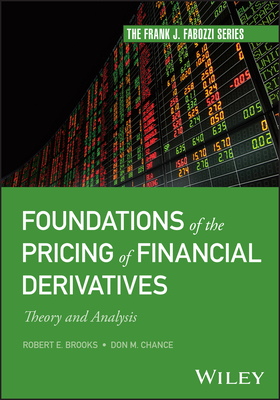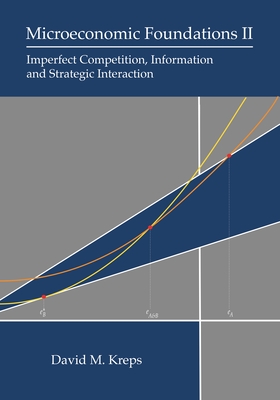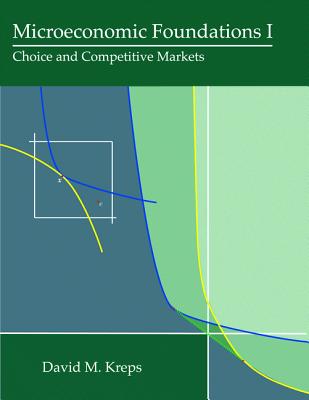图书简介
Two expert finance academics with professional experience, Professors Robert Brooks and Don Chance, deliver a practical new text for doctoral and masters students and also new practitioners. The book draws on the authors extensive combined experience teaching, researching, and consulting on this topic and strikes an effective balance between fine-grained quantitative detail and high-level theoretical explanations. The authors fill the gap left by books directed at masters-level students that often lack mathematical rigor. Further, books aimed at mathematically trained graduate students often lack quantitative explanations and critical foundational materials. Thus, this book provides the technical background required to understand the more advanced mathematics used in this discipline, in class, in research, and in practice.
Preface Chapter 1: Introduction and Overview 1.1 Motivation for this Book 1.2 What is a Derivative? 1.3 Options Versus Forwards, Futures, and Swaps 1.4 Size and Scope of the Financial Derivatives Markets 1.5 Outline and Features of the Book 1.6 Final Thoughts and Preview 1.7 Questions and Problems Chapter 2: Boundaries, Limits, and Conditions on Option Prices 2.1 Setup, Definitions, and Arbitrage 2.2 Absolute Minimum and Maximum Values 2.3 The Value of an American Option Relative to the Value of a European Option 2.4 The Value of an Option at Expiration 2.5 The Lower Bounds of European and American Options and the Optimality of Early Exercise 2.6 Differences in Option Values by Exercise Price 2.7 The Effect of Differences in Time to Expiration 2.8 The Convexity Rule 2.9 Put-Call Parity 2.10 The Effect of Interest Rates on Option Prices 2.11 The Effect of Volatility on Option Prices 2.12 The Building Blocks of European Options 2.13 Recap and Preview 2.14 Questions and Problems Chapter 3: Elementary Review of Mathematics for Finance 3.1 Summation Notation 3.2 Product Notation 3.3 Logarithms and Exponentials 3.4 Series Formulas 3.5 Calculus Derivatives 3.6 Integration 3.7 Differential Equations 3.8 Recap and Preview 3.9 Questions and Problems Chapter 4: Elementary Review of Probability for Finance 4.1 Marginal, Conditional, and Joint Probabilities 4.2 Expectations, Variances, and Covariances of Discrete Random Variables 4.3 Continuous Random Variables 4.4 Some General Results in Probability Theory 4.5 Technical Introduction to Common Probability Distributions Used in Finance 4.6 Recap and Preview 4.7 Questions and Problems Chapter 5: Financial Applications of Probability Distributions 5.1 The Univariate Normal Probability Distribution 5.2 Contrasting the Normal with the Lognormal Probability Distribution 5.3 Bivariate Normal Probability Distribution 5.4 The Bivariate Lognormal Probability Distribution 5.5 Recap and Preview Appendix 5A An Excel Routine for the Bivariate Normal Probability 5.6 Questions and Problems Chapter 6: Basic Concepts in Valuing Risky Assets and Derivatives 6.1 Valuing Risky Assets 6.2 Risk Neutral Pricing in Discrete Time 6.3 Identical Assets and the Law of One Price 6.4 Derivative Contracts 6.5 A First Look at Valuing Options 6.6 A World of Risk Averse and Risk Neutral Investors 6.7 Pricing Options Under Risk Aversion 6.8 Recap and Preview 6.9 Questions and Problems Chapter 7: The Binomial Model 7.1 The One-Period Binomial Model for Calls 7.2 The One-Period Binomial Model for Puts 7.3 Arbitraging Price Discrepancies 7.4 The Multiperiod Model 7.5 American Options and Early Exercise in the Binomial Framework 7.6 Dividends and Recombination 7.7 Path Independence and Path Dependence 7.8 Recap and Preview Appendix 7A Derivation of Equation Appendix 7B Pascals Triangle and the Binomial Model 7.9 Questions and Problems Chapter 8: Calculating the Greeks in the Binomial Model 8.1 Standard Approach 8.2 An Enhanced Method for Estimating Delta and Gamma 8.3 Numerical Examples 8.4 Dividends 8.5 Recap and Preview 8.5 Questions and Problems Chapter 9: Convergence of the Binomial Model to the Black-Scholes-Merton Model 9.1 Setting up the Problem 9.2 The Hsia Proof 9.3 Put Options 9.4 Dividends 9.5 Recap and Preview 9.6 Questions and Problems Chapter 10: The Basics of Brownian Motion and Wiener Processes 10.1 Brownian Motion 10.2 The Wiener Process 10.3 Properties of a Model of Asset Price Fluctuations 10.4 Building a Model of Asset Price Fluctuations 10.5 Simulating Brownian Motion and Wiener Processes 10.6 Formal Statement of Wiener Process Properties 10.7 Recap and Preview Appendix 10A Simulation of the Wiener Process and the Square of the Wiener Process for Successively Smaller Time Intervals 10.8 Questions and Problems Chapter 11: Stochastic Calculus and Itôs Lemma 11.1 A Result from Basic Calculus 11.2 Introducing Stochastic Calculus and Itôs Lemma 11.3 Itôs Integral 11.4 The Integral Form of Itôs Lemma 11.5 Some Additional Cases of Itôs Lemma 11.6 Recap and Preview Appendix 11A Technical Stochastic Integral Results 11A.1 Selected Stochastic Integral Results 11A.2 A General Linear Theorem 11.7 Questions and Problems Chapter 12: Properties of the Lognormal and Normal Diffusion Processes for Modeling Assets 12.1 A Stochastic Process for the Asset Relative Return 12.2 A Stochastic Process for the Asset Price Change 12.3 Solving the Stochastic Differential Equation 12.4 Solutions to Stochastic Differential Equations are Not Always the Same as Solutions to Corresponding Ordinary Differential Equations 12.5 Finding the Expected Future Asset Price 12.5 Geometric Brownian Motion or Arithmetic Brownian Motion? 12.6 Recap and Preview 12.7 Questions and Problems Chapter 13: Deriving the Black-Scholes-Merton Model 13.1 Derivation of the European Call Option Pricing Formula 13.2 The European Put Option Pricing Formula 13.3 Deriving the Black-Scholes-Merton Model as an Expected Value 13.4 Deriving the Black-Scholes-Merton Model as the Solution of a Partial Differential Equation 13.5 Decomposing the Black-Scholes-Merton Model into Binary Options 13.6 Black-Scholes-Merton Option Pricing when there are Dividends 13.7 Selected Black-Scholes-Merton Model Limiting Results 13.8 Computing the Black-Scholes-Merton Option Pricing Model Values 13.9 Recap and Preview Appendix 13.A Deriving the Arithmetic Brownian Motion Option Pricing Model 13.10 Questions and Problems Chapter 14: The Greeks in the Black-Scholes-Merton Model 14.1 Delta: The First Derivative with Respect to the Underlying Price 14.2 Gamma: The Second Derivative with Respect to the Underlying Price 14.3 Theta: The First Derivative with Respect to Time 14.4 Verifying the Solution of the Partial Differential Equation 14.5 Selected Other Partial Derivatives of the Black-Scholes-Merton Model 14.6 Partial Derivatives of the Black-Scholes-Merton European Put Option Pricing Model 14.7 Incorporating Dividends 14.8 Greek Sensitivities 14.8 Elasticities 14.8 Extended Greeks of the Black-Scholes-Merton Option Pricing Model 14.9 Recap and Preview 14.10 Questions and Problems Chapter 15: Girsanovs Theorem in Option Pricing 15.1 The Martingale Representation Theorem 15.2 Introducing the Radon-Nikodym Derivative by Changing the Drift for a Single Random Variable 15.3 A Complete Probability Space 15.4 Formal Statement of Girsanovs Theorem 15.5 Changing the Drift in a Continuous Time Stochastic Process 15.6 Changing the Drift of an Asset Price Process 15.7 Recap and Preview 15.8 Questions and Problems Chapter 16: Connecting Discrete and Continuous Brownian Motions 16.1 Brownian Motion in a Discrete World 16.2 Moving from a Discrete to a Continuous World 16.3 Changing the Probability Measure with the Radon-Nikodym Derivative in Discrete Time 16.4 The Kolmogorov Equations 16.5 Recap and Preview 16.6 Questions and Problems Chapter 17: Applying Linear Homogeneity to Option Pricing 17.1 Introduction to Exchange Options 17.2 Homogeneous Functions 17.3 Eulers Rule 17.4 Using Linear Homogeneity and Eulers Rule to Derive the Black-Scholes-Merton Model 17.5 Exchange Option Pricing 17.6 Spread Options 17.7 Forward-Start Options 17.8 Recap and Preview Appendix 17A Linear Homogeneity and the Arithmetic Brownian Motion Model Appendix 17B Multivariate Itôs Lemma Appendix 17C Greeks of the Exchange Option Model 17.7 Questions and Problems Chapter 18: Compound Option Pricing 18.1 Equity as an Option 18.2 Valuing an Option on the Equity as a Compound Option 18.3 Compound Option Boundary Conditions and Parities 18.4 Geskes Approach to Valuing a Call on a Call 18.5 Characteristics of Geskes Call on Call Option 18.6 Geskes Call on Call Option Model and Linear Homogeneity 18.7 Generalized Compound Option Pricing Model 18.8 Installment Options 18.9 Recap and Preview Appendix 18A Selected Greeks of the Compound Option 18.10 Questions and Problems Chapter 19: American Call Option Pricing 19.1 Closed-Form American Call Pricing: Roll-Geske-Whaley 19.2 The Two-Payment Case 19.3 Recap and Preview Appendix 19A Numerical Example of the One-Dividend Model 19.4 Questions and Problems Chapter 20: American Put Option Pricing 20.1 The Nature of the Problem of Pricing an American Put 20.2 The American Put as a Series of Compound Options 20.3 Recap and Preview 20.4 Questions and Problems Chapter 21: Min-Max Option Pricing 21.1 Characteristics of Stulz Min-Max Option 21.2 Pricing the Call on the Min 21.3 Other Related Options 21.4 Recap and Preview Appendix 21A Multivariate Feynman-Kac Theorem Appendix 21B An Alternative Derivation of the Min Max Option Model 21.5 Questions and Problems Chapter 22: Pricing Forwards, Futures, and Options on Forwards and Futures 22.1 Forward Contracts 22.2 Pricing Futures Contracts 22.3 Options on Forwards and Futures 22.4 Recap and Preview 22.5 Questions and Problems Chapter 23: Monte Carlo Simulation 23.1 Standard Monte Carlo Simulation of the Lognormal Diffusion 23.2 Reducing the Standard Error 23.3 Simulation with More than One Random Variable 23.4 Recap and Preview 23.5 Questions and Problems Chapter 24: Finite Difference Methods 24.1 Setting up the Finite Difference Problem 24.2 The Explicit Finite Difference Method 24.3 The Implicit Finite Difference Method 24.4 Finite Difference Put Option Pricing 24.5 Dividends and Early Exercise 24.6 Recap and Preview 24.7 Questions and Problems Chapter 25: The Term Structure of Interest Rates 25.1 The Unbiased Expectations Hypothesis 25.2 The Local Expectations Hypothesis 25.3 The Difference Between the Local and Unbiased Expectations Hypotheses 25.4 Other Term Structure of Interest Rate Hypotheses 25.5 Recap and Preview 25.6 Questions and Problems Chapter 26: Interest Rate Contracts: Forward Rate Agreements, Swaps, and Options 26.1 Interest Rate Forwards 26.2 Interest Rate Swaps 26.3 Interest Rate Options 26.4 Recap and Preview 26.5 Questions and Problems Chapter 27: Fitting an Arbitrage-Free Term Structure Model 27.1 Basic Structure of the HJM Model 27.2 Discretizing the HJM Model 27.3 Fitting a Binomial Tree to the Heath-Jarrow-Morton Model 27.4 Filling in the Remainder of the HJM Binomial Tree 27.5 Recap and Preview 27.6 Questions and Problems Chapter 28. Pricing Fixed-Income Securities and Derivatives Using an Arbitrage-Free Binomial Tree 28.1 Zero Coupon Bonds 28.2 Coupon Bonds 28.3 Options on Zero-Coupon Bonds 28.4 Options on Coupon Bonds 28.5 Callable Bonds 28.6 Forward Rate Agreements (FRAs) 28.7 Interest Rate Swaps 28.8 Interest Rate Options 28.9 Interest Rate Swaptions 28.10 Interest Rate Futures 28.11 Recap and Preview 28.12 Questions and Problems Chapter 29: Option Prices and the Prices of State-Contingent Claims 29.1 Pure Assets in the Market 29.2 Pricing Pure and Complex Assets 29.3 Numerical Example 29.4 State Pricing and Options in a Binomial Framework 29.5 State Pricing and Options in Continuous Time 29.6 Recap and Preview 29.7 Questions and Problems Chapter 30: Option Prices and Expected Returns 30.1 The Basic Framework 30.2 Expected Returns on Options 30.3 Volatilities of Options 30.4 Options and the Capital Asset Pricing Model 30.5 Options and the Sharpe Ratio 30.6 The Stochastic Process Followed by the Option 30.7 Recap and Preview 30.8 Questions and Problems Chapter 31: Implied Volatility and the Volatility Smile 31.1 Historical Volatility and the VIX 31.2 An Example of Implied Volatility 31.3 The Volatility Surface 31.4 The Perfect Substitutability of Options 31.5 Other Attempts to Explain the Implied Volatility Smile 31.6 How Practitioners Use the Implied Volatility Surface 31.7 Recap and Preview 31.8 Questions and Problems Chapter 32: Pricing Foreign Currency Options 32.1 Definition of Terms 32.2 Option Payoffs 32.3 Valuation of the Options 32.4 Probability of Exercise 32.5 Some Terminology Confusion 32.6 Recap 32.7 Questions and Problems References Symbols Used
Trade Policy 买家须知
- 关于产品:
- ● 正版保障:本网站隶属于中国国际图书贸易集团公司,确保所有图书都是100%正版。
- ● 环保纸张:进口图书大多使用的都是环保轻型张,颜色偏黄,重量比较轻。
- ● 毛边版:即书翻页的地方,故意做成了参差不齐的样子,一般为精装版,更具收藏价值。
关于退换货:- 由于预订产品的特殊性,采购订单正式发订后,买方不得无故取消全部或部分产品的订购。
- 由于进口图书的特殊性,发生以下情况的,请直接拒收货物,由快递返回:
- ● 外包装破损/发错货/少发货/图书外观破损/图书配件不全(例如:光盘等)
并请在工作日通过电话400-008-1110联系我们。
- 签收后,如发生以下情况,请在签收后的5个工作日内联系客服办理退换货:
- ● 缺页/错页/错印/脱线
关于发货时间:- 一般情况下:
- ●【现货】 下单后48小时内由北京(库房)发出快递。
- ●【预订】【预售】下单后国外发货,到货时间预计5-8周左右,店铺默认中通快递,如需顺丰快递邮费到付。
- ● 需要开具发票的客户,发货时间可能在上述基础上再延后1-2个工作日(紧急发票需求,请联系010-68433105/3213);
- ● 如遇其他特殊原因,对发货时间有影响的,我们会第一时间在网站公告,敬请留意。
关于到货时间:- 由于进口图书入境入库后,都是委托第三方快递发货,所以我们只能保证在规定时间内发出,但无法为您保证确切的到货时间。
- ● 主要城市一般2-4天
- ● 偏远地区一般4-7天
关于接听咨询电话的时间:- 010-68433105/3213正常接听咨询电话的时间为:周一至周五上午8:30~下午5:00,周六、日及法定节假日休息,将无法接听来电,敬请谅解。
- 其它时间您也可以通过邮件联系我们:customer@readgo.cn,工作日会优先处理。
关于快递:- ● 已付款订单:主要由中通、宅急送负责派送,订单进度查询请拨打010-68433105/3213。
本书暂无推荐
本书暂无推荐















